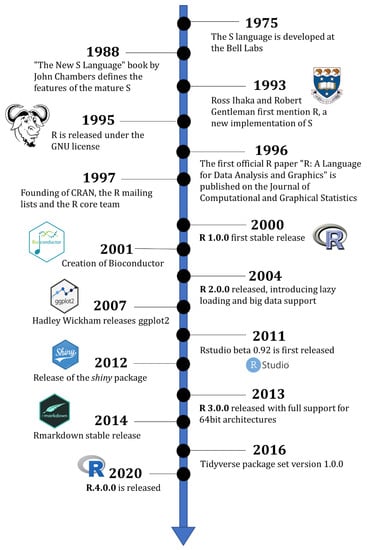Bioinformatics Tutor for Dummies
Bioinformatics Tutor for Dummies
Blog Article
Bioinformatics Tutor - The Facts
Table of ContentsThe Best Strategy To Use For Bioinformatics TutorExcitement About Bioinformatics TutorBioinformatics Tutor Fundamentals ExplainedThe Facts About Bioinformatics Tutor UncoveredThe smart Trick of Bioinformatics Tutor That Nobody is Discussing
Of the total individuals included in the training, 80% were students from public college establishments, while the continuing to be 20% originated from personal organizations. To get approved for a certification of involvement, trainees were required to participate in at the very least 90% of the total training hours. As an outcome of this demand, an excellent 95% of the participants successfully gotten their certificates, having not just satisfied the minimum participation criteria yet also finished all designated activities throughout the training.
Throughout the height of the COVID-19 pandemic, especially between June and August 2020, the job group was charged with arranging specialized training in bioinformatics. This training was specifically focused on trainees from the study group Core for Research in Applied Computer at the Federal College of Pará (UFRA) The adaptation to remote discovering systems because of the pandemic produced an opportunity to check out brand-new training approaches and electronic devices that enhanced both reach and efficiency.
This program was designed to supply an available yet comprehensive review of Artificial Intelligence strategies, particularly as applied in bioinformatics (Bioinformatics Tutor). This online format allowed participation from pupils across Brazil, several of whom might not have had the chance to attend in-person sessions.
About Bioinformatics Tutor
A significant attribute of this course was its emphasis on hands-on discovering. Approximately 50% of the overall training hours were committed to sensible activities where trainees developed smart versions and applications in a variety of scientific domains, including genetics, molecular biology, and ecological information evaluation. Extensively used tools and structures such as Spyder, Google Colab, Jupyter Notebooks, and Orange were integrated right into the coursework. These platforms allowed trainees to take part in real-time information adjustment, version training, and formula trial and error.
Sixty of them were connected with different greater education and learning institutions in the state of Pará, while the continuing to be twenty came from establishments located in 5 various other Brazilian states. By introducing Artificial Knowledge in a useful and relevant context, the effort offered to link the space between concept and real-world application, supplying students with a strong foundation for future research study or employment in the area.
The training initiative developed part of a broader scholastic outreach effort understood as the Bioinformatics on the Road job. This task has, throughout the years, introduced lots of pupils to the world of bioinformatics and computational biology. The occasions held under this umbrella campaign have happened across several areas and years, as summarized in Table 1 (Listing of occasions, locations, years, and total varieties of pupils and trainers)
Among one of the most amazing results of the Bioinformatics on the Roadway initiative has actually been its payment to the development of decentralized research groups. Numerous of these teams, initially brought with each other by their engagement in training events, have considering that taken place to produce independent scientific research study in cooperation with local academic establishments. The training not just fostered scientific thinking this content within the context of bioinformatics however likewise triggered joint relationships that extended beyond the training atmosphere. These partnerships have actually brought about increased local scientific productivity and contributed meaningfully to the advancement of the wider bioinformatics neighborhood in Brazil.
The Main Principles Of Bioinformatics Tutor
The same team, leaving out IH and this link RR, also acted as tutors for the functional training modules. Funding for the task was offered via the grant 88887.200562/ 2018-00 from CAPES.
The Federal University of Pará's Workplace of Research (PROPESP/UFPA) likewise gave financial support, especially for the production of the final manuscript. The writers proclaim no commercial or monetary conflicts of rate of interest that can have influenced the research. All point of views and interpretations revealed in this post are exclusively those of the writers and do not always mirror those of their corresponding institutions, the publisher, editors, or reviewers involved in the publication process.

How Bioinformatics Tutor can Save You Time, Stress, and Money.
From an instructional point of view, the mentor method used in the training was intentionally interactive. Classes were conducted in a fashion that urged trainee involvement and discussion, going beyond rote memorization to discover just how concepts are established, applied in daily life, and tested in scholastic settings. The instructional philosophy concentrated on supporting both strong and struggling pupils, supplying personalized support, and structure self-confidence through continual click here now mentorship and perseverance.

Each team, containing roughly 36 participants, was sustained by 3 coaches-- the majority of whom were postdoctoral researchers with customized proficiency. These mentors not just assisted create the group tasks yet likewise facilitated their implementation, making sure that each research study question was both pertinent and appropriately challenging. The objective was to offer a biologically practical context that participants could discover with flexible goals and access to curated datasets.
For added insights right into the approach and outcomes of this project-based understanding method, readers are guided to S1 Text, that includes thorough descriptions of the instructional framework, examination techniques, and task styles made use of in the training sessions.
The Buzz on Bioinformatics Tutor
Of the total amount individuals included in the training, 80% were students from public greater education and learning establishments, while the continuing to be 20% came from private organizations. To qualify for a certification of participation, trainees were called for to attend at least 90% of the overall training hours. Significantly, past the pupils that enrolled in the training sessions, seven knowledgeable teachers got involved in supplying the courses, while three devoted research study professors collaborated the general training procedure. About 50% of the complete training hours were committed to sensible tasks where pupils built smart versions and applications in an array of clinical domain names, consisting of genes, molecular biology, and ecological information analysis. The training not only fostered scientific reasoning within the context of bioinformatics yet additionally triggered joint partnerships that prolonged beyond the training atmosphere.
Report this page